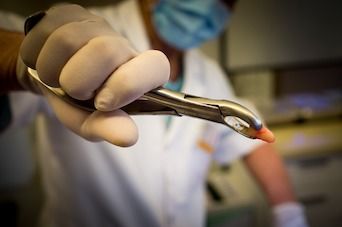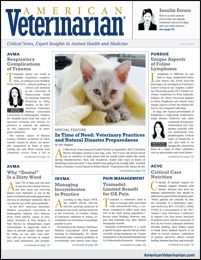AVMA 2017: Why 'Dental' Is a Dirty Word
Providing quality oral care to your patients and conveying the value of that care to your clients will improve compliance, staff satisfaction, and practice profit.

About 75% of dogs and cats seen in practice have dental disease, but how many are receiving dental care? Dentistry is one of the most overlooked and underappreciated services in veterinary medicine. But it can also be one of the most profitable.
At the 2017 American Veterinary Medical Association Convention in Indianapolis, Indiana, Kris Bannon, DVM, FAVD, DAVDC, owner of Veterinary Dentistry & Oral Surgery of New Mexico in Albuquerque, urged veterinarians to appreciate what it takes to provide quality dental care. By doing so, she said, your practice will see an increase in compliance, staff satisfaction, and revenue.
Don't Call It a "Dental"
Dr. Bannon explained that by referring to all dental procedures simply as “dentals,” veterinarians are doing a disservice to themselves, their staff, and their clients, because “this simplistic term negates the value of what you are doing.” The word dental is an adjective, she noted. “If you were to say ‘I’m going to do a ‘cardiac’ right now,’ what would that mean?”
RELATED:
- Veterinary Dentistry: Alternatives to Dental Extractions
- Myth: Dental Pain Doesn't Hurt Animals
A good dental cleaning takes time, Dr. Bannon noted. Beyond lowering the value of the services being provided, the term dental also likely blocks the time incorrectly. Instead, she suggested several alternate phrases that are easy to record in a scheduler:
- Complete dental cleaning (CDC)
- Comprehensive oral health assessment and treatment (COHAT)
- Oral assessment, treatment, and prevention (oral ATP)
- Periodontal therapy and surgery
- Prophylactic (prophy; although this is often a misnomer because it’s unlikely that oral disease is being prevented)
“[In most cases], this is oral surgery,” she said, “and veterinarians need to start thinking of it as such.” Portraying it in this light to pet owners highlights its importance and the amount of time and skill it will take to complete.
Train Your Support Staff
“The support staff in dentistry is huge, huge, huge,” Dr. Bannon said. “I could not do my job without my technicians, without my support staff. It is important that they are trained well.”
In most of the United States, veterinary technicians are not legally allowed to extract teeth, but they can conduct and assist with other aspects of the exam. Dr. Bannon recommended that support staff do 90% of the work during oral procedures, allowing the veterinarian to focus on what only he or she can do. “Veterinarians are the ones making the decisions about what needs to be done and how it can be of value,” she said, “but the technicians make the procedure valuable by doing a fantastic job.”
Show Clients the Value
Most clients are worried about the cost of veterinary dental care, Dr. Bannon said, but what they really want is value. “Value means quality, which is vastly different than cost,” she said. “Cost is important, but don’t just talk about the bottom line. Talk about the value of what they’re getting.” Dr. Bannon laid out a few steps that will help veterinarians show clients the real value of oral procedures.
The Exam
Conduct a thorough oral exam before the pet is placed under anesthesia, checking as much as you can in the awake patient so the owner is well prepared for what will happen when the pet is anesthetized. “Do a good thorough awake exam and show the owner what you find,” Dr. Bannon said.
- Palpate the extraoral facial features, evaluating for symmetry, pain, and swelling.
- Open the mouth and check the temporomandibular joint for crevices and pain.
- Check for malocclusion and related problems.
- Count the teeth, checking for missing, fractured, or extra teeth.
- Look for oral masses, lacerations, and foreign bodies.
Scaling above the gum line is an important part of a dental cleaning, she said, but scaling below the gum line is more important. “If you’re not going under the gum line, then you’re going to have progression of gum disease,” Dr. Bannon said, “and that’s the spot you want to focus on.”
Dr. Bannon recommended dedicating an anesthesia technician specifically for dental procedures and staying on top of blood pressure monitoring, intubation, and fluids during the procedure. While the pet is anesthetized, conduct a detailed physical examination. Use a probe to wiggle each tooth during the exam, Dr. Bannon suggested; otherwise, you won’t pick up subtle mobility. Check each tooth for fractures, cavities, irregular surfaces, signs of resorption, and discoloration, and photograph any abnormalities. “There are 42 teeth in the dog mouth, 30 in the cat mouth. That is 42 different physical exams that you’re doing,” Dr. Bannon said. “Palpate the tongue, the palate, the tonsils, the inside of the cheeks, the buccal mucosa, the sublingual tissues. This is the best time to examine all that because you’re right there.”
Full-mouth intraoral radiographs should be taken as a baseline, then as needed thereafter, Dr. Bannon said. She urged veterinarians: “Don’t give the owner the option to decline the radiographs.”
Results and Follow-Up
One of the most important steps in showing the value of an oral procedure to clients is providing them with the results. “Don’t let the clients pay their bill until you or the technician has talked to them about what was wrong and what was done to correct the problem,” Dr. Bannon said. Showing the before photos, the radiographs, and the after photos helps clients better understand why they now have a $1000-plus bill and makes them more willing to pay it.
Dr. Bannon noted that on-site follow-up is important. At her clinic, this is done at no charge 1 to 2 weeks after the procedure. “During the follow-up, let your technicians talk to the client about healing, home care, and helpful dental products.” She also advises her entire team to remind the clients that dental care is an ongoing need. “They have to keep coming back,” she said.
Conclusion
If you stop thinking, “It’s just a dental” and remember the important steps of conducting a valuable oral procedure, your clients will be happier and more loyal, your staff will be more excited about coming to work, and your bottom line will reflect your success.
